Preserve and enhance the surface of your work with Mayco and Duncan’s Brushing Clear Glazes.
Our clear glazes provide a gloss or matte finish over top of your colored glaze decoration. Mayco offers three clear brushing glazes: NT-BR, S-2101 and C-300. Brushing glazes differ from dipping versions as they contain organic additives, making the brushing glazes thicker, more viscous than dipping formulas. The amount of glaze deposited on bisque is primarily a function of glaze viscosity and the amount of time the bisque is left in the glaze – careful attention to these two details are critical to obtaining satisfactory results.
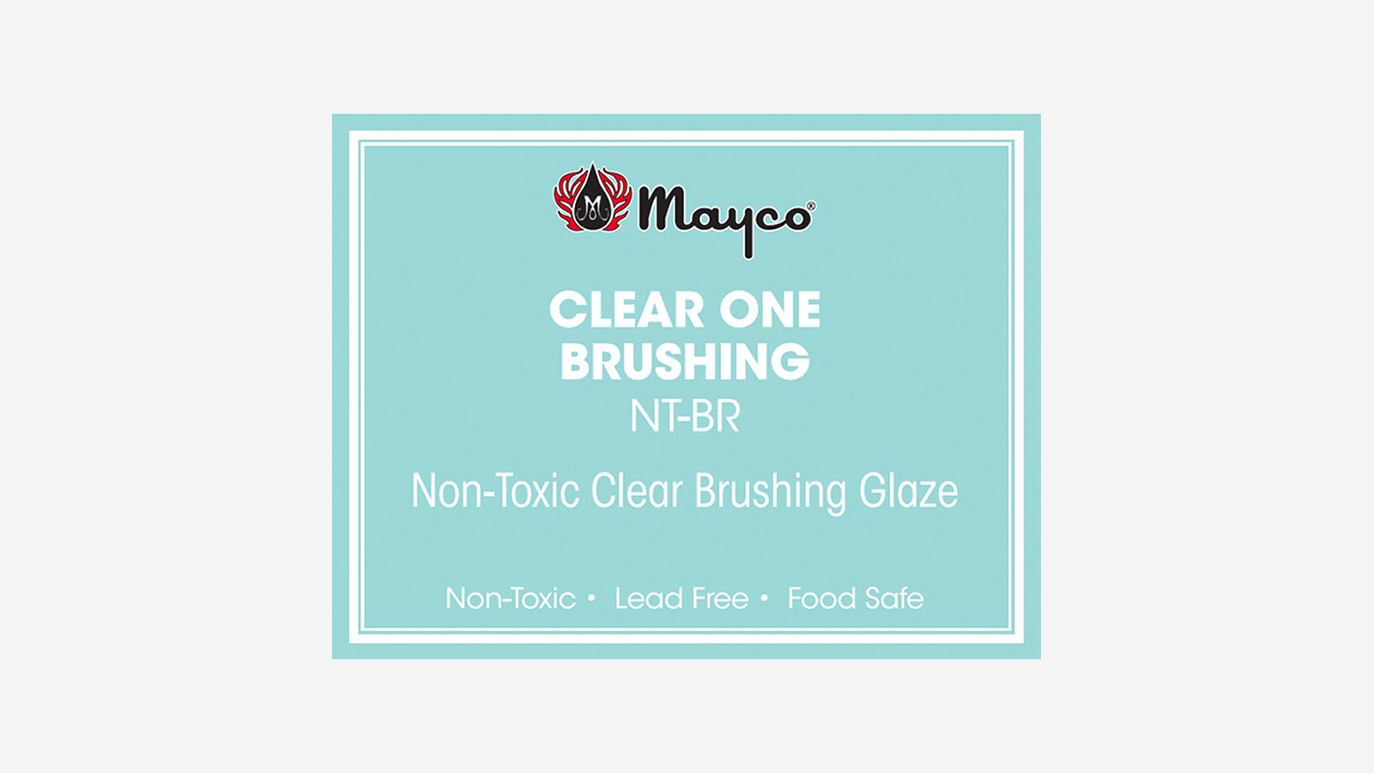
Fast drying and gloss finish. Compatible with Chrome Tin pigments and luster. Also available as a dipping glaze (NT-CLR).
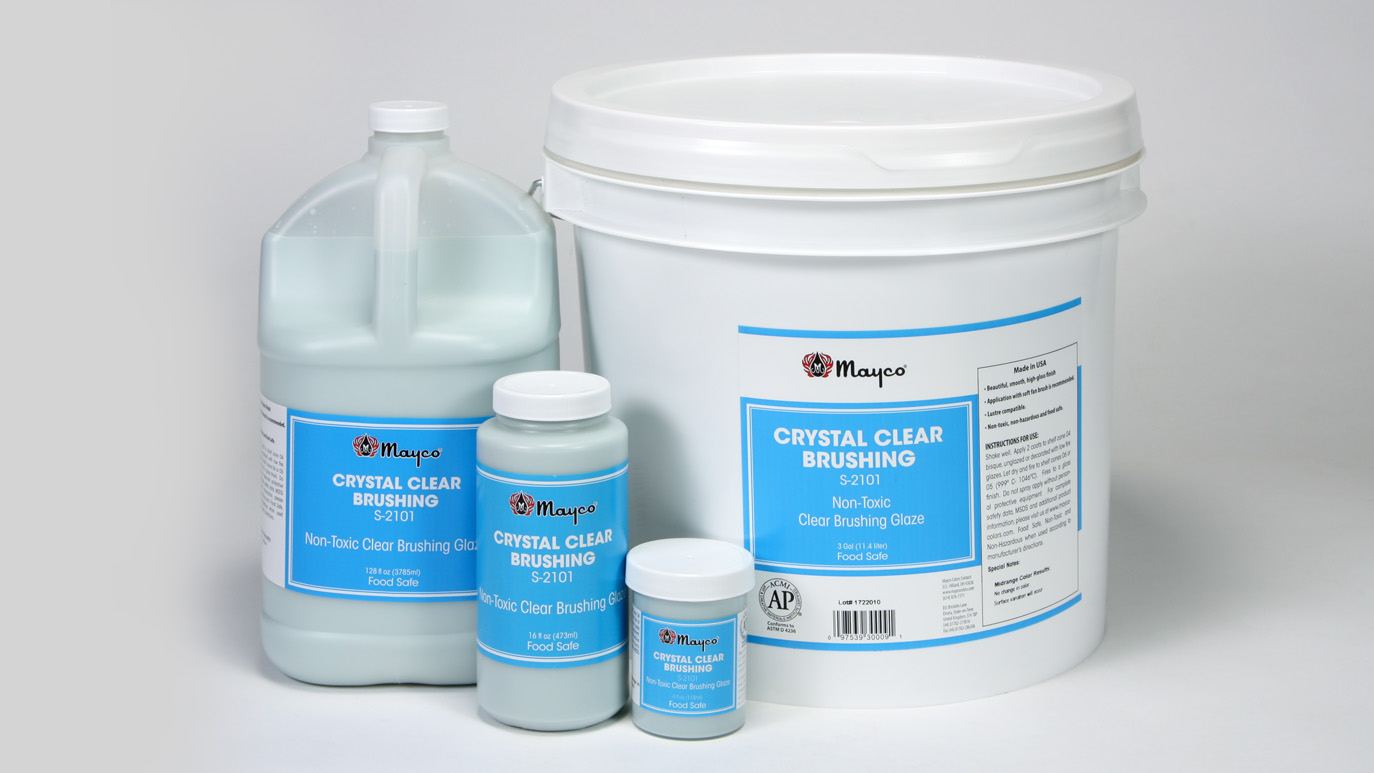
Clean, clear surface and gloss finish. Luster compatible. S-2101 may not be compatible with all red clays as a blueish haze may appear after firing. Also available as a dipping glaze (NT-CLR).
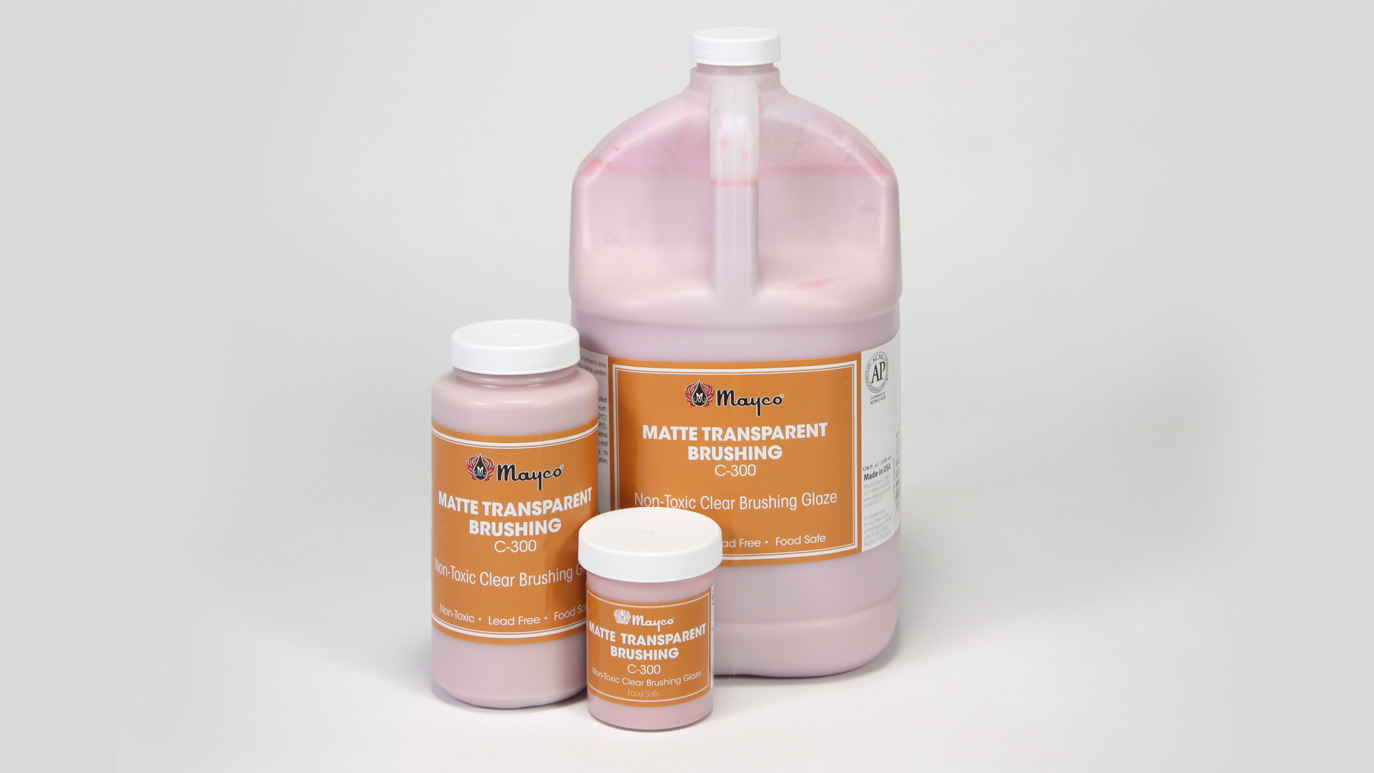
Matte sheen at cone 06 and will gloss at higher temperatures. Luster compatible.
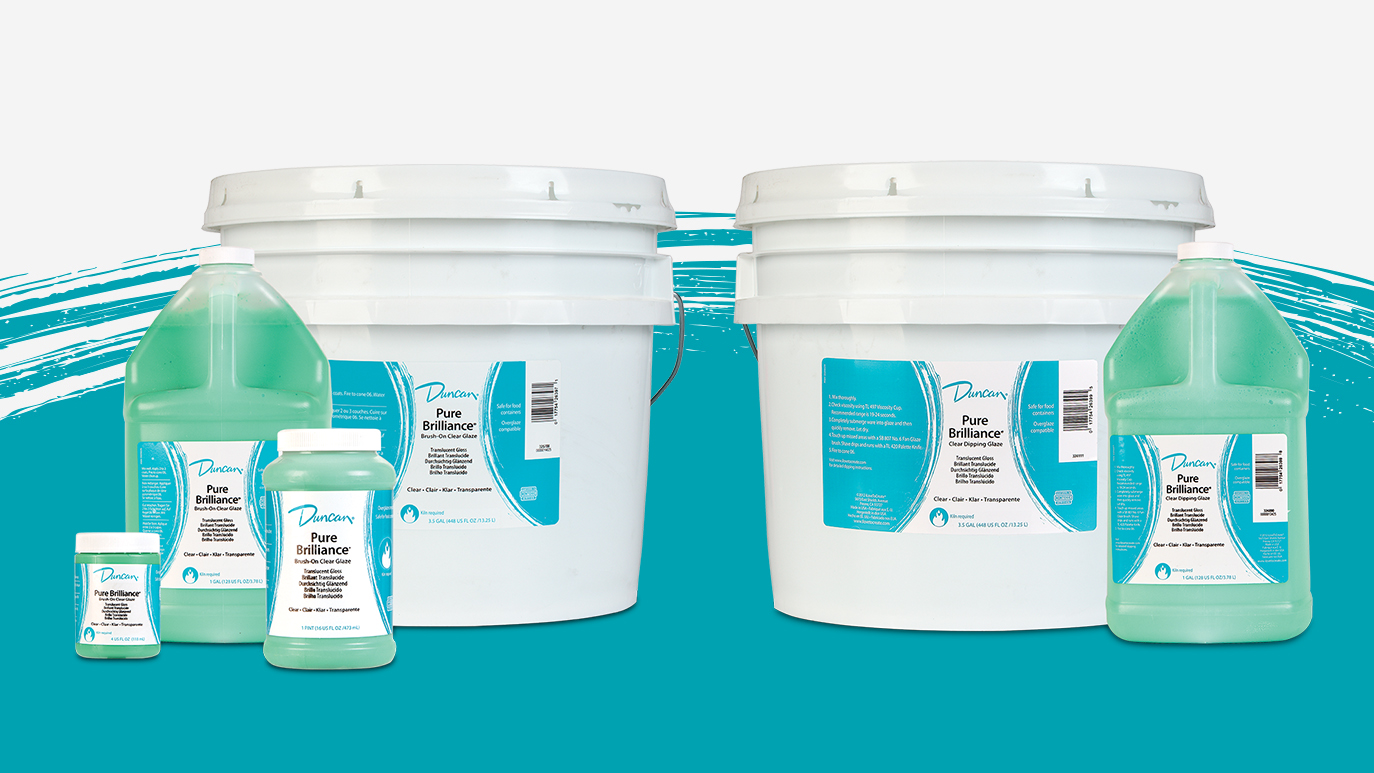
Duncan PB001 Pure Brilliance® Clear Glaze is a high-performance gloss clear glaze. Featuring a fast and stable dry time, this craze-resistant clear glaze enhances underglaze colors with brilliant shine and superior protection. The green color of Pure Brilliance Clear Glaze makes it easy for users to see where the glaze has been applied. Pure Brilliance Clear Glazes work beautifully over a variety of underglazes including Stroke & Coats®, Foundations®, Fundamentals® Underglazes, and EZ Stroke™. Pure Brilliance Clear Glazes are overglaze compatible. Pure Brilliance Clear Glazes are available in brush-on (PB001) and dipping (PBDIP) formulas.
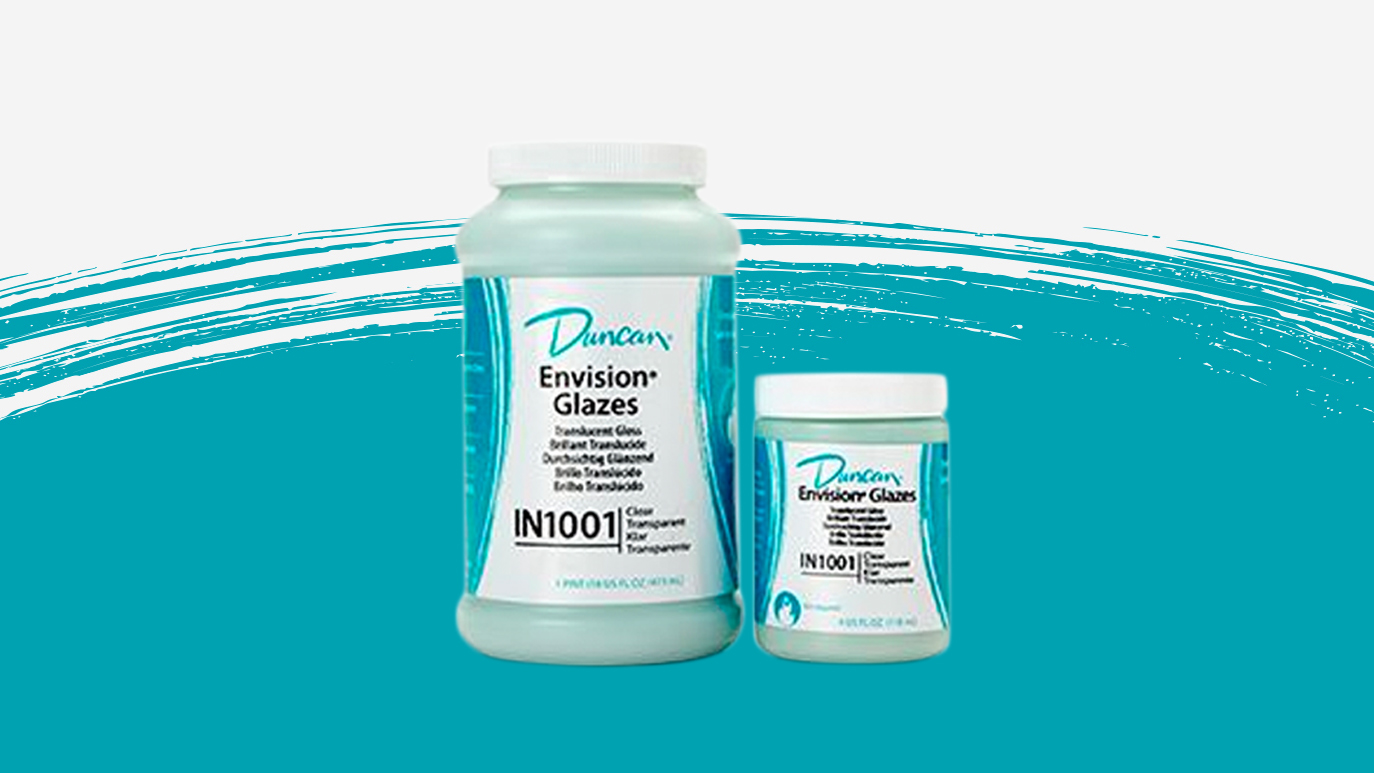
Duncan IN1001 Envision® Clear glazes are made to give consistently true-color finishes and outstanding brushability for ease of application. Envision® clear glaze is overglaze compatible. Envision® Clear Glaze is available in brush-on (IN1001) formula.
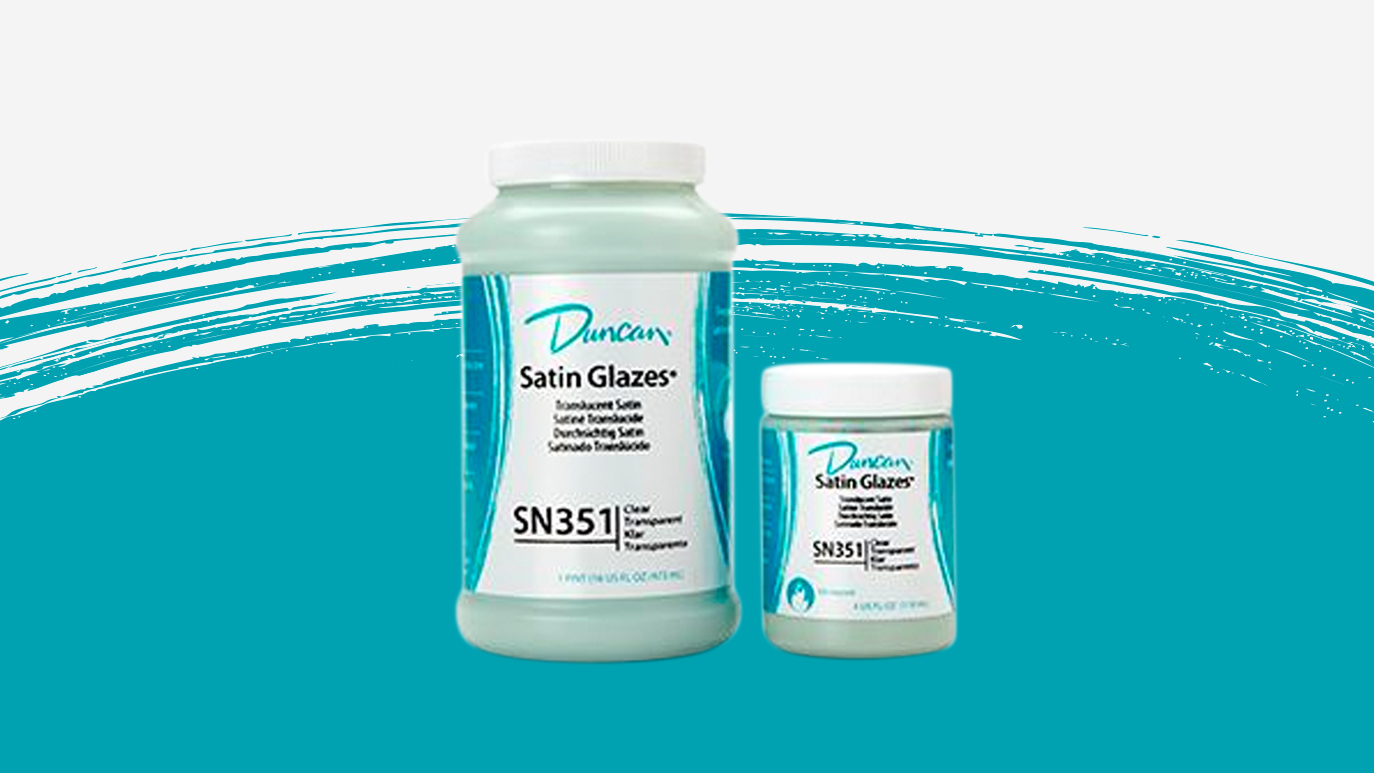
Duncan SN351 Satin Clear Glaze produces a smooth, opaque matte clear finish with only two coats. Satin Clear Glaze can be successfully used over opaque and translucent underglazes. Satin Clear Glaze is available in brush-on (SN351) formula.
Clear glaze forms an impervious barrier that protects against liquids, dirt and abrasion.
Shake well. Apply one to two coats to shelf cone 04 (1060°C) bisque, unglazed or decorated with low-fire products. Dry thoroughly and fire to shelf cone 06 or 05 (999°C-1046°C). NT-BR S-2101, PB001, and IN1001 will fire to a gloss finish. C-300 and SN351 will fire to a matte finish.
Clear Satin & Matte Brush-On Glaze:
Apply to shelf cone 04 bisque. Apply 2 smooth, even coats. Note only 2 coats, heavy application may cause a cloudy finish. Fire to shelf cone 06. Clean up with water.
Pure Brilliance Brush-On Glaze:
Mix clear glaze with palette knife. Sponge Application: Dab a clean sponge into glaze and dab one coat over colors on surface of bisque to cover. After the sponged coat has dried thoroughly, load glaze brush with glaze and brush on two coats. Allow to dry between coats. Brush Application: Load a glaze brush with glaze and apply two flowing coats. Let dry between coats. Let ware dry thoroughly. Set ware securely on clean, sharp stilts in kiln. Fire to cone 06.
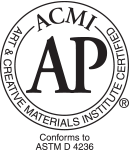
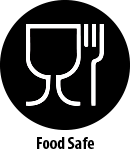

All Mayco and Duncan Brushing Clear glazes are AP Non-Toxic, Food Safe and Dinnerware Safe, when used according to the manufacturer’s directions.
Clear glazes are glass coatings used to completely seal the ware (decorated or undecorated, making the ware impervious to liquids. They are also used to boost the brilliance of the underlying color. Clear glazes can come in different finishes such as gloss (NT-BR, S2101) or matte (C-300).
Choosing a dipping or brushing version of a clear glaze is dependent on application preference, quantity of glazing and time. Mayco offers pre-made low fire clear glaze in both dipping and brushing formulas. Brushing clear glazes differ from dipping versions in that they contain organic additives, which make the brushing glazes thicker (viscous) than dipping formulas. These additives are meant to improve the flow of glaze from the brush and assist with the even-ness of application, enhancing the fired surface finish. The amount of glaze deposited on the ware is primarily a function of glaze viscosity and the number of applications. Typically, 2 applications are required, allowing dry time between coats. Dipping clear glazes contain fewer organic additives, making dipping glazes less viscous than their brushing counterpart. The amount of glaze deposited on the ware is a function of glaze viscosity and the amount of time left in the glaze. Often dipping glazes are preferred in a studio or production environment where a large quantity of ware is processed.
Glaze and clay/bisque bodies are both ceramic materials. During the firing process they expand and then contract together; the rate of expansion/contraction can be measured and mathematically stated as a coefficient of expansion.
Glaze and clay/bisque bodies are both ceramic materials. During the firing process they expand and then contract together; the rate of expansion/contraction can be measured and mathematically stated as a coefficient of expansion. If the two materials are not compatible – if they expand or contract at widely varying rates – the glaze may crack or chip off the body (please understand that incompatible COE’s are only one cause for glazes to chip or crack).
Mayco strives to produce glazes that are as tolerant of as many major sources of earthenware and stoneware bodies as is feasible. We stock over 20 types of clay bodies for testing purposes and glaze and fire samples from every shipment of bisque. But there are hundreds of clay bodies in use around the world, with hundreds of color glaze and clear glaze combinations being used on these bodies.
With respect to clear glaze: if you are experiencing an inordinate amount of shivering – glaze chipping off the body– you may want to try S-2000. If you are experiencing crazing – glaze in which cracks appear – you may want to try NT-CLR.
Oolites are little pebbles of calcium carbonate. They form naturally although the exact reasons for their formation are unclear. With respect to clear glaze their occurrence is usually during the late summer months – the combination of the warm temperatures and vibration the glaze may experience during transit may factors. These materials can be strained out of the glaze using a fine mesh sieve.
If the application of glaze is too heavy the C-300 will fire to a hazy/milky finish. We recommend 2 even coats.
Yes, it takes on the finish of the clear glaze i.e. if applied to a gloss glaze it will be glossy, if applied with a matte glaze it will be matte.
Use witness cones to verify the kiln is firing to the correct temperature. This is the only way to verify the internal kiln temperature.
It was formulated for a cone 06/05 firing. Mayco recommends the Stoneware line of clear glazes for higher temperatures.
Mayco’s quality control with clear glazes are on white clay bodies. Iron Oxide reacts with clear glazes causing the tint.